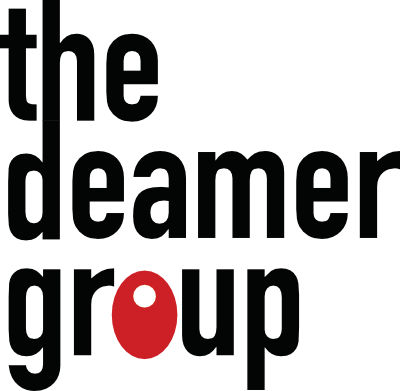Considering the continued strength of the job market, companies and their HR departments are wondering: How do I attract, hire, and onboard talent for my vacancies as efficiently as possible?
The consistently low unemployment rate requires employers to make changes to the advantage of their prospective workers, including how they attract, interact with, and create benefits packages for their potential hires. When job seekers are aware of their competitive advantage, what can you do to avoid the scary phenomena like ghosting and job-hopping, as well as the high quitting rate that is symptomatic of the candidate-driven market?
Here are the challenges you’re facing
Generational differences are making their impact in hiring.
Job-hopping. A Robert Half survey has found that workers of younger generations see more rewards in changing jobs. A full three-quarters (75%) of respondents between 18- and 34-years old view job-hopping as beneficial in contrast to 59% between 35 and 54 and 51% of those who are 55 or older. A 2018 LinkedIn survey found that Generation Z has the highest labor mobility, with these workers being 3X as likely to job hop.
Older workers. Many employers struggle to deal with age discrimination. There are many benefits of hiring the under-tapped pool of older workers, especially in the current market where people over 50 frequently spend twice as long as younger ones to get hired despite having more experience in the workplace and thus being faster to onboard.
Modern hiring. It’s important to have realistic expectations about hiring new grads. Gen Z workers want to be engaged across a wider range of channels in person and online as well as more personalized interaction and face time with recruiters. Younger workers expect a quicker, more transparent process from recruiting to job offer. After having often been ghosted by employers, they are ghosting in large numbers now that the market is in their favor, which results in high costs and a loss of time and resources for employers across the board.
Here are 4 important adjustments HR can make to get hiring right the first time around.
Be competitive in salary and benefits
- Do market research and offer competitive salaries. In a candidate-driven market, you can’t afford to offer below-market value for the most in-demand roles and skillsets. Offer salaries that match competitive market rates or you risk making potential applicants feel undervalued and taking their talent elsewhere.
- Lean on strong company culture and benefits. Senior Employer Branding Specialist at Banfield Pet Hospital Allison Dunsmore says that focusing on benefits, financial resources and developmental opportunities differentiates them from the competition. Family leave, remote work, and PTO are increasingly popular, and there is no end of ways to incorporate them. If your budget doesn’t allow for a higher salary, explore the possibility of offering other in-demand benefits.
- Streamline your job ads. Spend a little extra time writing a killer job ad that clearly states the job responsibilities and includes only necessary requirements. Consider also including a salary range. Altogether, this will increase transparency, decrease job seeker hesitation and widen the range of applicants.
- Retain while you recruit. When sourcing new talent, identify what makes your company unique (including mission and benefits) and emphasize it in the recruiting process. Remember that, for small-to-medium-sized business (SMBs), the size itself can be a draw for many people alongside a positive company culture.
Invest in your employees
- Retain while you recruit, part 2! SMBs sometimes get the short end of the stick when it comes to a competitive market. Focus on keeping current workers happy so they don’t receive better offers—and you don’t lose their institutional knowledge and productivity.
- Engage and develop your employees. Don’t just offer competitive salaries and benefits to new talent, make sure current workers also reap the benefits so they feel a stronger sense of security. Work to build career development into your model—among the 61% of job seekers for whom it’s a large priority, it will boost engagement, productivity and loyalty.
- Build your talent pipeline. Employee referrals are widely considered to be the highest quality recruiting tool. Happy employees will personally vouch for strong candidates. Treating them well and incentivizing brand outreach will allow you to access networks that are 10X larger than yours, reach people who are 3X as likely to trust the message, and create brand ambassadors on board with your mission.
Be personal and targeted
- Maintain company pages on your site and social. Employer branding can help balance reviews on sites like Glassdoor, which many job seekers use to decide where to apply. Potential candidates want to know if they are compatible with your company culture and get a taste of the employee experience. For example, to promote an authentic message, T-Mobile uses only real employee photos. Many companies are using engaging videos to stand out.
- Use multiple outreach channels. Holland McCue, Head of Global Employer Branding at Delta Air Lines, emphasizes building marketing strategies around the three C’s: Candidate + Channel + Content. While traditional recruiting methods are important, SMBs that rely too much on one, like word of mouth, may be focusing on too small a talent pool. Where does your ideal candidate hang out online? Expand there and personalize it. You’ll attract a wider candidate base and diversity of thinkers.
- Optimize for mobile. Keep in mind the majority of job searches today take place on smartphones, making it essential to optimize your listings for the mobile experience.
Communicate efficiently and transparently
- Focus on the candidate experience. Recruiting radio silence isn’t just a bad look; it comes off as disrespectful. Communicate openly and often throughout the recruitment process, and don’t forget the importance of transparency on both ends. Having a clear timeline for applicant feedback sets positive expectations, increasing the likelihood that candidates will become new hires (and reduce the chance of ghosting) should you offer them the job.
- Personalize with, yes, automation. A common reason for ghosting on the employer end is not enough resources to respond to a high application volume. Modern technology allows you to set up automatic responses that touch on all phases of the process and can be personalized with applicant names.
- Be human. Even while automating, create a personal (non-robotic!) tone that is in line with your employer brand; you may even choose to incorporate some meta humor about the hiring process! Never leave applicants hanging; they will appreciate a rejection (and be more likely to stay in your talent pool) far more than never hearing back.
- Speed it up! This is another place where automated management systems and clear timelines come in handy to make the process as efficient as possible. Remember that qualified job seekers are also looking elsewhere, so hire with a sense of urgency. If your interviewee checks all the right skills boxes and seems like a good cultural fit to boot, don’t wait to extend the offer or risk losing out.
Now go forth and source great talent!

